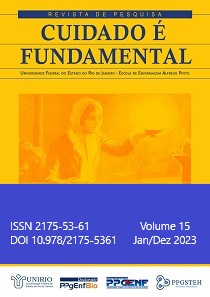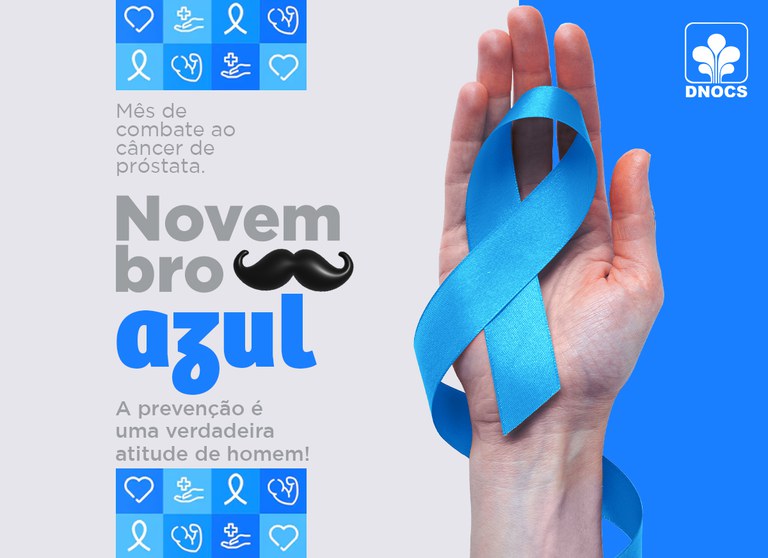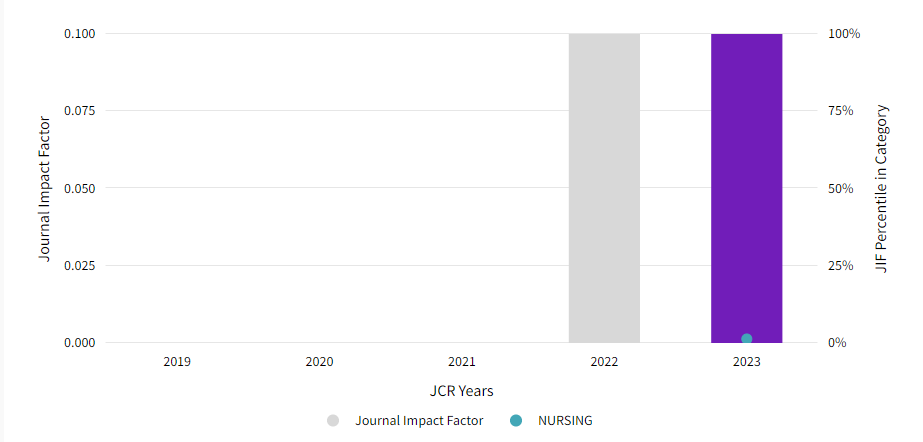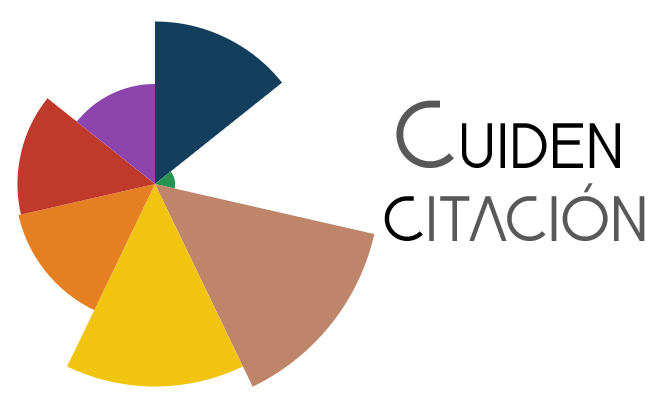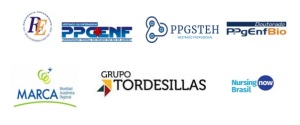Mobile apps for pressure injury management
an integrative review
DOI:
https://doi.org/10.9789/2175-5361.rpcfo.v15.12632Keywords:
Mobile applications, Nursing informatics, Software, Pressure injuryAbstract
Objective: to identify scientific productions focused on the development of mobile applications for pressure injury management. Method: integrative literature review, carried out in MEDLINE, CINAHL, LILACS, SCOPUS and Web of Science databases. The guiding question was used: What are the characteristics of educational mobile applications that aim to manage pressure injury prevention? Results: 576 articles were identified that, after applying the inclusion and exclusion criteria, the selected sample included 13 articles being discussed from four dimensions: Prevention, evaluation and treatment of PI; Prevention and assessment of PI; Evaluation and treatment of PI; and Evaluation. Conclusion: it was observed that most applications have influenced and/or have the potential to positively influence the assessment, prevention and treatment of pressure injuries, and these technologies are capable of improving knowledge on the subject and providing care for individuals or patients. caregivers of those who have LP.
Downloads
References
National Pressure Ulcer Advisory Panel (NPUAP). National Pressure Ulcer Advisory Panel announces a change in terminology from pressure ulcer to pressure injury and updates the stages of pressure injury [Internet]. 2016 [cited 2022 fev 10]. Available from: http: https://www.woundsource.com/blog/national-pressure-ulcer-advisory-panel-npuap-announces-change-in-terminology-pressure-ulcer
European Pressure Ulcer Advisory Panel, National Pressure Injury Advisory Panel and Pan Pacific Pressure Injury Alliance (EPUAP/NPIAP/PPPIA). Prevention and treatment of pressure ulcers/injuries: clinical practice guideline [Internet]. The international guideline. Emily Haesler (Ed.). EPUAP/NPIAP/PPPIA: 2019 [cited 2022 fev 10]. Available from: https://www.biosanas.com.br/uploads/outros/artigos_cientificos/127/956e02196892d7140b9bb3cdf116d13b.pdf
Mazzo A, Miranda FBG, Meska MHG, Bianchini A, Bernardes RM, Pereira Junior GA. Teaching of pressure injury prevention and treatment using simulation. Esc. Anna Nery Rev. Enferm. [Internet]. 2018 [cited 2022 feb 05]; 22(1):e20170182 https://doi.org/10.1590/2177-9465-EAN-2020-0027
World Health Organization (WHO). The conceptual framework for the international classification for patient safety [Internet]. 2014 [cited 2017 Mar 02]. Available from: http://www.who.int/features/factfiles/patient_safety/en/
Constantin AG, Moreira APP, Oliveira JLC, Hofstätter LM, Fernandes LM. Incidence of pressure injury in an adult intensive care unit. Estima [Internet]. 2018 [cited 2022 mar 12]; 16:e1118. Available from: https://www.revistaestima.com.br/index.php/estima/article/view/454/pdf
Agência Nacional de Vigilância Sanitária (ANVISA). Nota técnica GVIMS/GGTES nº 03/2017. Práticas seguras para prevenção de lesão por pressão em serviços de saúde [Internet]. Brasília, DF: ANVISA; 2017 [cited 2022 Feb 14]. Available from: https://proqualis.net/atonormativo/nota-t%C3%A9cnica-gvimsggtes-no-032017-pr%C3%A1ticas-seguras-para-preven%C3%A7%C3%A3o-de-les%C3%A3o-por-press%C3%A3o
Silva AM, Mascarenhas VH, Araújo SN, Machado RD, Santos AM, Andrade EM. Mobile technologies in the Nursing area. Rev. Bras. Enferm. [Internet]. 2018 [cited 2022 mar 08]; 71(5). Available from: https://www.scielo.br/j/reben/a/3WV33fMDq5VB3HStMcMFMKN/?lang=en
Sving E, Fredriksson L, Gunningberg L, Mamhidir A-G. Getting evidence-based pressure ulcer prevention into practice: a process evaluation of a multifaceted intervention in a hospital setting. J. Clin. Nurs. [Internet]. 2017 [cited 2022 mar 02]; 26(19-20):3200-11. Available from: https://doi.org/10.1111/jocn.13668
Le Marne FA, Butler S, Beavis E, Gill D, Bye AME. EpApp: development and evaluation of a smartphone/tablet app for adolescents with epilepsy. J. Clin. Neurosci. [Internet]. 2018 [cited 2022 may 08]; 50. Available from: https://www.jocn-journal.com/article/S0967-5868(17)31937-9/fulltext
Cristmals CD, Gross JJ. An integrative literature review framework for postgraduate nursing research reviews. Eur. J. Res. Med. Sci. [Internet]. 2017 [cited 2022 feb 20]; 5(1). Available from: https://www.researchgate.net/publication/329963300_An_integrative_literature_review_framework_for_postgraduate_nursing_research_reviews
Akobeng AK. Principles of evidence based medicine. Arch. Dis. Child. [Internet]. 2005 [cited 2021 Jun 04]; 90(8). Available from: https://adc.bmj.com/content/90/8/837.long
Silva DSD, et al. Depressão e risco de suicídio entre profissionais de Enfermagem: revisão integrativa. Rev. Esc. Enferm. USP [Internet]. 2015 [cited 2022 Jan 05]; 49(6). Available from: https://www.scielo.br/j/reeusp/a/D7Bd3ZsmQkq4FTQ5Cq8FnhP/?lang=pt
De Sousa LMM, Marques-Vieira CMA, Severino SSP, Antunes AV. A metodologia de revisão integrativa de literatura em enfermagem. Rev. Investigação em Enferm. [Internet]. 2017 [cited 2022 Jan 06]; 2(21). Available from: https://www.researchgate.net/publication/321319742_Metodologia_de_Revisao_Integrativa_da_Literatura_em_Enfermagem
Moher D, Liberati A, Tetzlaff J, Altman DG. Preferred reporting items for systematic reviews and meta-analyses: the PRISMA statement. PloS Med. [Internet]. 2009 jul [cited 2022 jun 06]; 6(7):e1000097. Available from: https://doi.org/10.1371/journal.pmed.1000097
Galvão TF, Pereira MG. Avaliação da qualidade da evidência de revisões sistemáticas. Epidemiol. Serv. Saúde (Online) [Internet]. 2015 [cited 2022 feb 20];24(1). Available from: http://dx.doi.org/10.5123/S1679-49742015000100019
Melnyk BM, Fineout-Overholt E. Making the case for evidence-based practice. In: Melnyk BM, Fineout-Overholt E. Evidence-based practice in nursing & healthcare. A guide to best practice. Philadelphia: Lippincot Williams & Wilkins; 2005
Salomé GM, Ferreira LM. Developing a mobile app for prevention and treatment of pressure injuries. Adv. Skin Wound Care. [Internet]. 2018 [cited 2022 Apr 12]; 31(2). Available from: https://pubmed.ncbi.nlm.nih.gov/29346156/
Rodrigues JPC, Pedro LMCC, Vardasca T, de la Torre-Díez I. Mobil health platform for pressure ulcer monitoring with electronic health record integration. Health Informatics J. [Internet]. 2013 [cited 2022 mar 09]; 19(4). Available from: https://pubmed.ncbi.nlm.nih.gov/24255053/
Garcia-Zapirain B, Sierra-Sosa D, Ortiz D, Isaza-Monsalve M, Elmaghraby A. Efficient use of mobile devices for quantification of pressure injury images. Technol. Health Care. [Internet]. 2018 [cited 2022 Apr 12];23(Suppl 1). Available from: https://www.ncbi.nlm.nih.gov/pmc/articles/PMC6004966/
Friesen MR, Hamel C, Mcleod RD. A mHealth application for chronic wound care: findings of a user trial. Int. J. Environ. Res. Public Health (Online). [Internet]. 2013 [cited 2022 Apr 05];19(10). Available from: https://pubmed.ncbi.nlm.nih.gov/24256739/ doi: 10.3390/ijerph10116199
Kryger MA, Crytzer TM, Fairman A, Quinby EL. Karavolis M, Pramana G. et al. The effect of the interactive mobile helath and rehabilitation system on health and psychosocial outcomes in spinal cord injury: randomized controlled trial. J. MED Internet Res. [Internet]. 2019 [cited 2022 Apr 20];28(21):e14305. Available from: https://pubmed.ncbi.nlm.nih.gov/31464189/
Jun YJ. Shin D, Choi WJ, Hwang JH, Kim H, Kim TG. et al. A mobile application for wound assessment and treatment: findings of a user trial. Int. J. Low. Extrem. Wounds [Internet]. 2016 [cited 2022 Mar 12];15(4). Available from: https://pubmed.ncbi.nlm.nih.gov/27881691/
Campos RS, Blanes L, Nicodemo D, Ferreira LM. “Sem pressão”: application with guidelines for identification, staginf and prevention of pressure injuries. Braz. J. Enterostomal Ther. [Internet]. 2020 [cited 2022 apr 20];18:e3120. Available from: https://www.revistaestima.com.br/estima/article/view/944/pdf
Vitoriano AM, Dell’Acqua MCQ, da Silva CPC, Oliveira JS, Novelli e Castro MC. Avaliação do software para risco e evolução de úlcera por pressão em unidade de terapia intensiva. Rev. Enferm. UFPE on line. [Internet]. 2016 [cited 2022 Apr 10]; 10(7). Available from: https://periodicos.ufpe.br/revistas/revistaenfermagem/article/view/11292 DOI: https://doi.org/10.5205/1981-8963-v10i7a11292p2369-2375-2016
Rajpaul K, Acton C. The use of smart technology to deliver efficient and effective pressure-damage education. Br. J. Nurs. [Internet]. 2015 [cited 2022 Apr 06]; 11(24):(Suppl 20:S4-S12). Available from: https://pubmed.ncbi.nlm.nih.gov/26559237/
Casal-Guisande M, Comesaña-Campos A, Cerqueiro-Pequeño J, Bouza-Rodríduez J. Design and Development of a Methodology Based on Expert Systems, Applied to the Treatment of Pressure Ulcers. Diagnostics (Basel). [Internet]. 2020 [cited 2022 Apr 08]; 10(9). Available from: https://pubmed.ncbi.nlm.nih.gov/32825387/
Fiordelli M, Znini C, Amann J, Scheel-Sailer a, Brach M, Stucki G. et al. Selecting Evidence-Based Content for Inclusion in Self-Management Apps for Pressure Injuries in Individuals With Spinal Cord Injury: Participatory Design Study. JMIR Mhealth Uhealth [Internet]. 2020 [cited 2022 apr 12]; 8(5):e15818. Available from: https://www.ncbi.nlm.nih.gov/pmc/articles/PMC7270844/ doi: 10.2196/15818
Orciuoli F, Orciuoli FJ, Peduto A. A Mobile Clinical DSS based on Augmented Reality and Deep Learning for the home cares of patients afflicted by bedsores. Procedia Comput Sci [Internet]. 2020 [cited 2022 apr 12]; 175(2020). Available from: https://www.sciencedirct.com/science/article/pii/S1877050920317087
Branco HPC, Santana LA, Neves RS, Guadagnin RV. Aplicativo móvel de processamento de imagens digitais para classificação automática de tecidos de lesões por pressão. Enferm. foco (Brasília). [Internet]. 2019 [cited 2022 Apr 05]; 10(7). Available from: http://revista.cofen.gov.br/index.php/enfermagem/article/view/2489 DOI: https://doi.org/10.21675/2357-707X.2019.v10.n7.2489
Machado R CG, Turrini RNT, Sousa CS. Mobile applications in surgical patient health education: an integrative review. Rev. Esc. Enferm. USP [Internet]. 2020 [cited 2022 Feb 10]; 54. Available from: https://doi.org/10.1590/s1980-220x2018032803555
Chacon JMF, Blanes L, Borba LG, Rocha LRM, Ferreira LM. Direct variable cost of the topical treatment of stages III and IV pressure injuries incurred in a public university hospital. J. Tissue Viab. [Internet]. 2017 [cited 2022 feb 02]; 26(2). Available from: https://doi.org/10.1016/j. jtv.2016.12.003
Paranhos WY, Santos VLCG. Avaliação de risco para úlceras de pressão por meio da Escala de Braden, na língua portuguesa. Rev. Esc. Enferm. USP [Internet]. 1999 [cited 2022 Mar 15]; 33. Available from: http://www.ee.usp.br/REEUSP/upload/pdf/799.pdf
Published
Versions
- 2023-12-15 (4)
- 2023-12-04 (3)
- 2023-12-04 (2)
- 2023-11-30 (1)
How to Cite
Issue
Section
License
Copyright (c) 2023 Revista de Pesquisa Cuidado é Fundamental Online

This work is licensed under a Creative Commons Attribution-NonCommercial-ShareAlike 4.0 International License.
TRANSFER AGREEMENT COPYRIGHT I transfer copyright of the article to the Journal of Care Survey is Fundamental - Online - RPCF, so it is accepted due to electronic publishing. The copyright includes the right to reproduce in whole or in part by any means, distributing that article, including figures, photographs, and any translations. The author can also print and distribute copies of your article, stating that since the rights belong to RPCF. I declare that this manuscript is original and has not been submitted for publication, in whole or in part to other online journals or not, so BMMC in the Annals of scientific events or book chapters.

